Abstract
Photosynthetic gas exchange and malic acid fluctuations were monitored in 69 well-watered plants from five morphologically similar species of Talinum in an investigation of the ecophysiological significance of the Crassulacean acid metabolism (CAM)-cycling mode of photosynthesis. Unlike CAM, atmospheric CO2 uptake in CAM-cycling occurs exclusively during the day; at night, the stomata are closed and respiratory CO2 is recaptured to form malic acid. All species showed similar patterns of day-night gas exchange and overnight malic acid accumulation, confirming the presence of CAM-cycling. Species averages for gas exchange parameters and malic acid fluctuation were significantly different such that the species with the highest daytime gas exchange had the lowest malic acid accumulation and vice versa. Also, daytime CO2 exchange and transpiration were negatively correlated with overnight malic acid fluctuation for all individuals examined together, as well as within one species. This suggests that malic acid may effect reductions in both atmospheric CO2 uptake and transpiration during the day. No significant correlation between malic acid fluctuation and water-use efficiency was found, although a nonsignificant trend of increasing water-use efficiency with increasing malic acid fluctuation was observed among species averages. This study provides evidence that CO2 recycling via malic acid is negatively correlated with daytime transpirational water losses in well-watered plants. Thus, CAM-cycling could be important for survival in the thin, frequently desiccated soils of rock outcrops on which these plants occur.
Full text
PDF
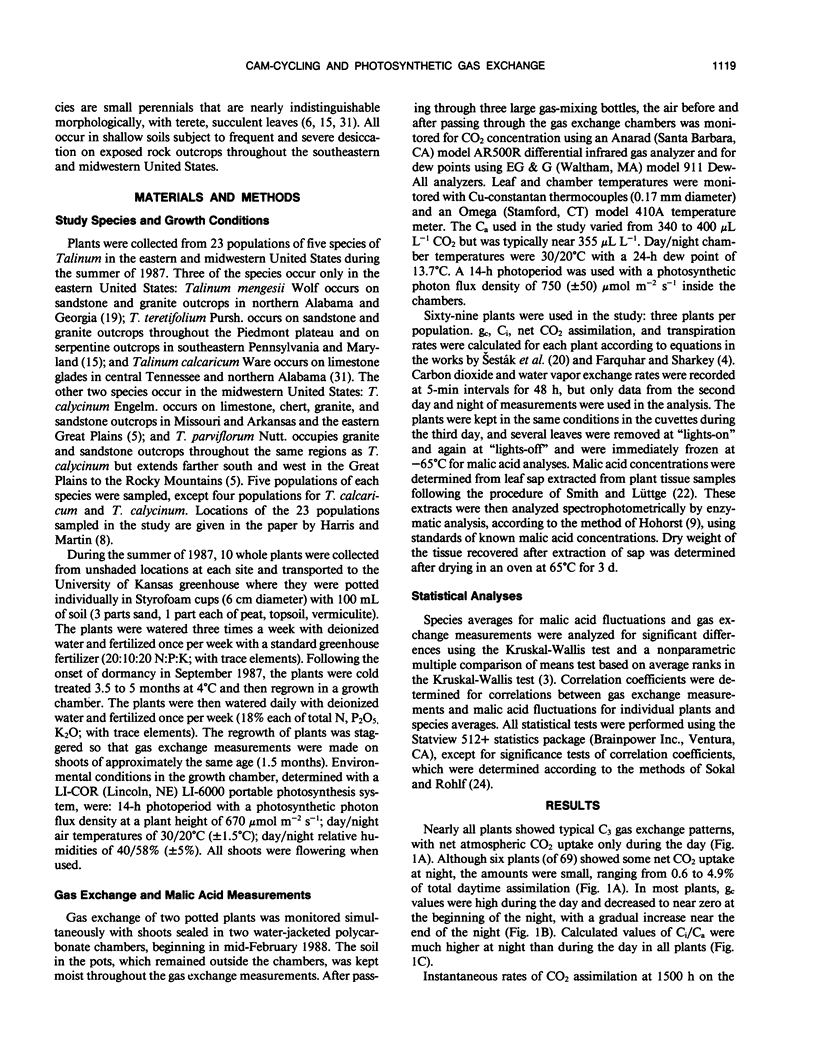
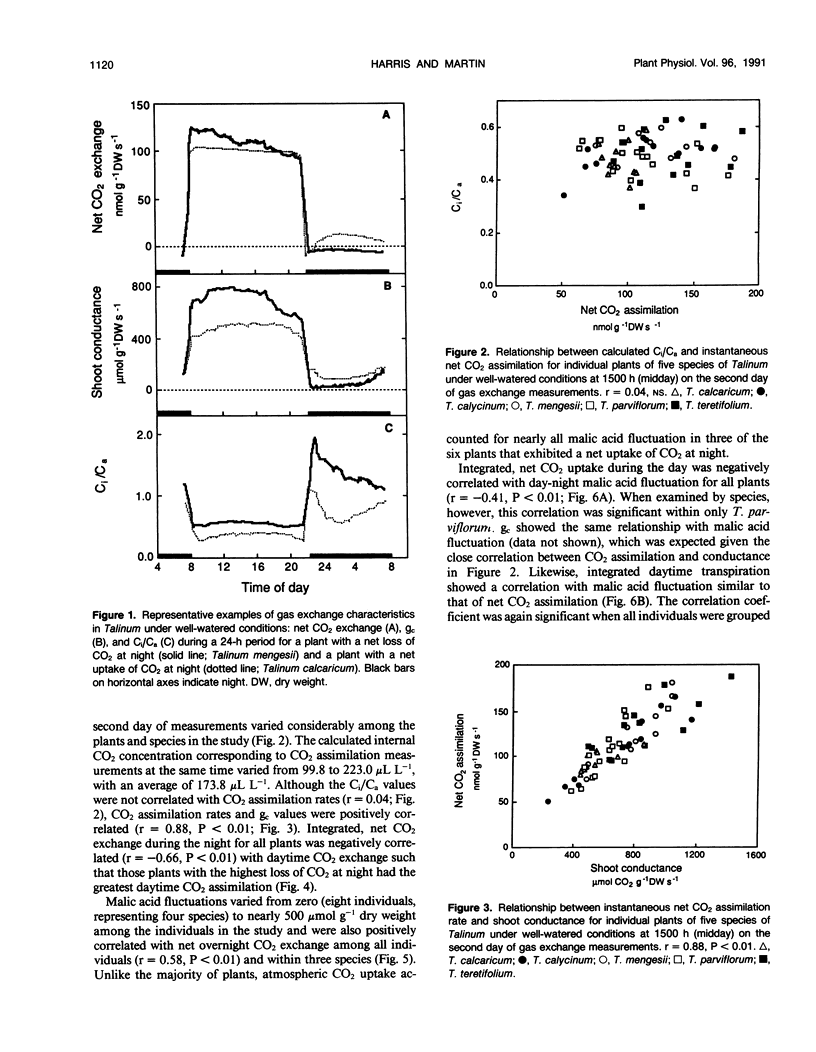
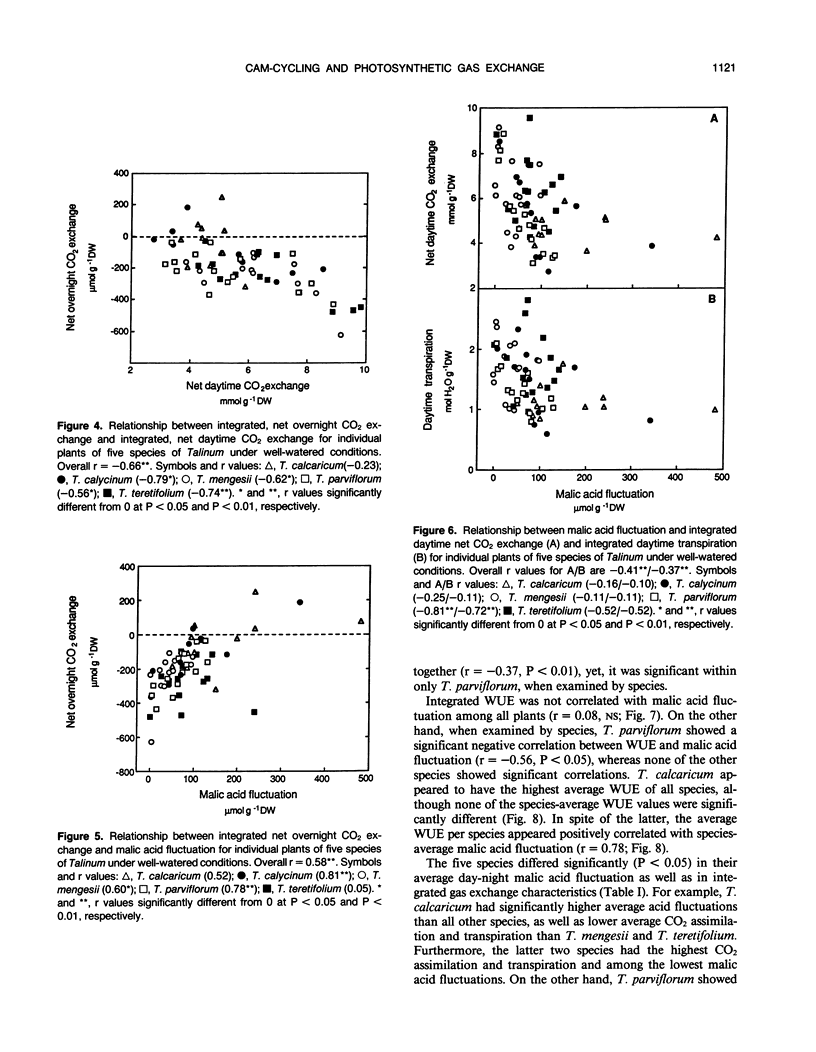
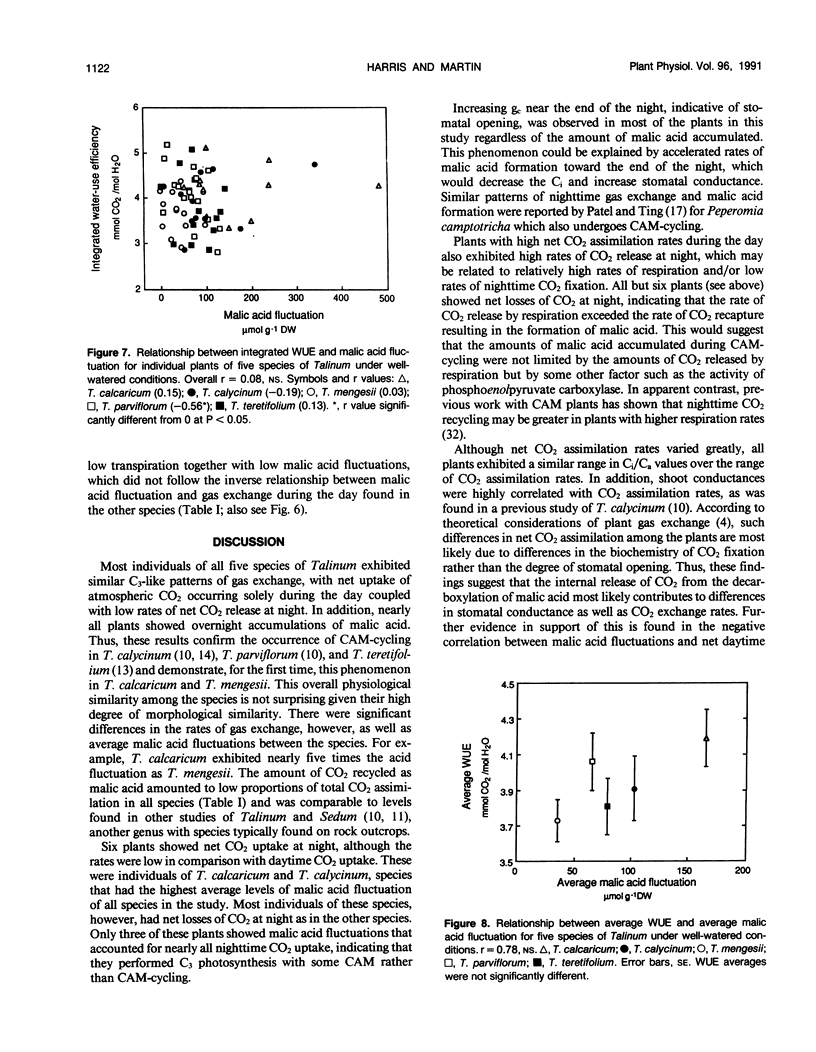
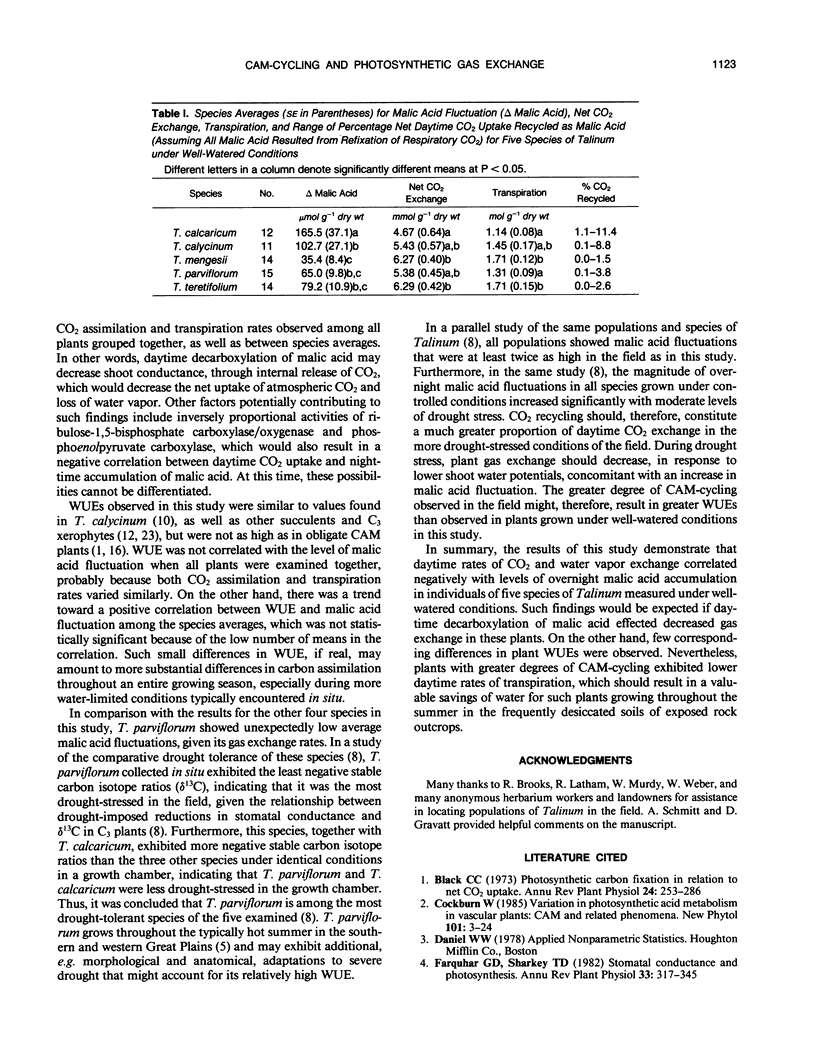
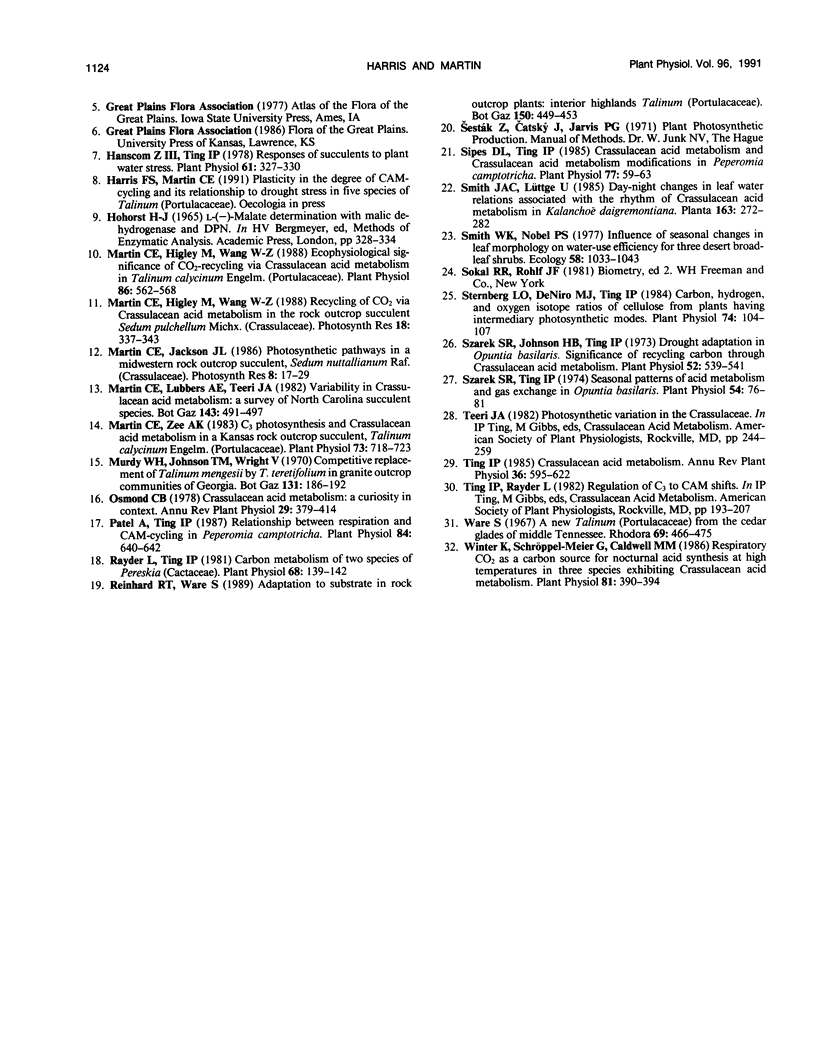
Selected References
These references are in PubMed. This may not be the complete list of references from this article.
- Hanscom Z., Ting I. P. Responses of succulents to plant water stress. Plant Physiol. 1978 Mar;61(3):327–330. doi: 10.1104/pp.61.3.327. [DOI] [PMC free article] [PubMed] [Google Scholar]
- Martin C. E., Higley M., Wang W. Z. Ecophysiological Significance of CO(2)-Recycling via Crassulacean Acid Metabolism in Talinum calycinum Engelm. (Portulacaceae). Plant Physiol. 1988 Feb;86(2):562–568. doi: 10.1104/pp.86.2.562. [DOI] [PMC free article] [PubMed] [Google Scholar]
- Martin C. E., Zee A. K. C(3) Photosynthesis and Crassulacean Acid Metabolism in a Kansas Rock Outcrop Succulent, Talinum calycinum Engelm. (Portulacaceae). Plant Physiol. 1983 Nov;73(3):718–723. doi: 10.1104/pp.73.3.718. [DOI] [PMC free article] [PubMed] [Google Scholar]
- Patel A., Ting I. P. Relationship between Respiration and CAM-Cycling in Peperomia camptotricha. Plant Physiol. 1987 Jul;84(3):640–642. doi: 10.1104/pp.84.3.640. [DOI] [PMC free article] [PubMed] [Google Scholar]
- Rayder L., Ting I. P. Carbon metabolism in two species of pereskia (cactaceae). Plant Physiol. 1981 Jul;68(1):139–142. doi: 10.1104/pp.68.1.139. [DOI] [PMC free article] [PubMed] [Google Scholar]
- Sipes D. L., Ting I. P. Crassulacean Acid Metabolism and Crassulacean Acid Metabolism Modifications in Peperomia camptotricha. Plant Physiol. 1985 Jan;77(1):59–63. doi: 10.1104/pp.77.1.59. [DOI] [PMC free article] [PubMed] [Google Scholar]
- Sternberg L. O., Deniro M. J., Ting I. P. Carbon, hydrogen, and oxygen isotope ratios of cellulose from plants having intermediary photosynthetic modes. Plant Physiol. 1984 Jan;74(1):104–107. doi: 10.1104/pp.74.1.104. [DOI] [PMC free article] [PubMed] [Google Scholar]
- Szarek S. R., Johnson H. B., Ting I. P. Drought Adaptation in Opuntia basilaris: Significance of Recycling Carbon through Crassulacean Acid Metabolism. Plant Physiol. 1973 Dec;52(6):539–541. doi: 10.1104/pp.52.6.539. [DOI] [PMC free article] [PubMed] [Google Scholar]
- Szarek S. R., Ting I. P. Seasonal Patterns of Acid Metabolism and Gas Exchange in Opuntia basilaris. Plant Physiol. 1974 Jul;54(1):76–81. doi: 10.1104/pp.54.1.76. [DOI] [PMC free article] [PubMed] [Google Scholar]
- Winter K., Schröppel-Meier G., Caldwell M. M. Respiratory CO(2) as Carbon Source for Nocturnal Acid Synthesis at High Temperatures in Three Species Exhibiting Crassulacean Acid Metabolism. Plant Physiol. 1986 Jun;81(2):390–394. doi: 10.1104/pp.81.2.390. [DOI] [PMC free article] [PubMed] [Google Scholar]


